Buenos Aires’ Chinatown (Barrio Chino as it is known by locals) is signaled by an ornate stone archway alongside the train tracks at the intersection of Juramento and Arribeños in Belgrano,
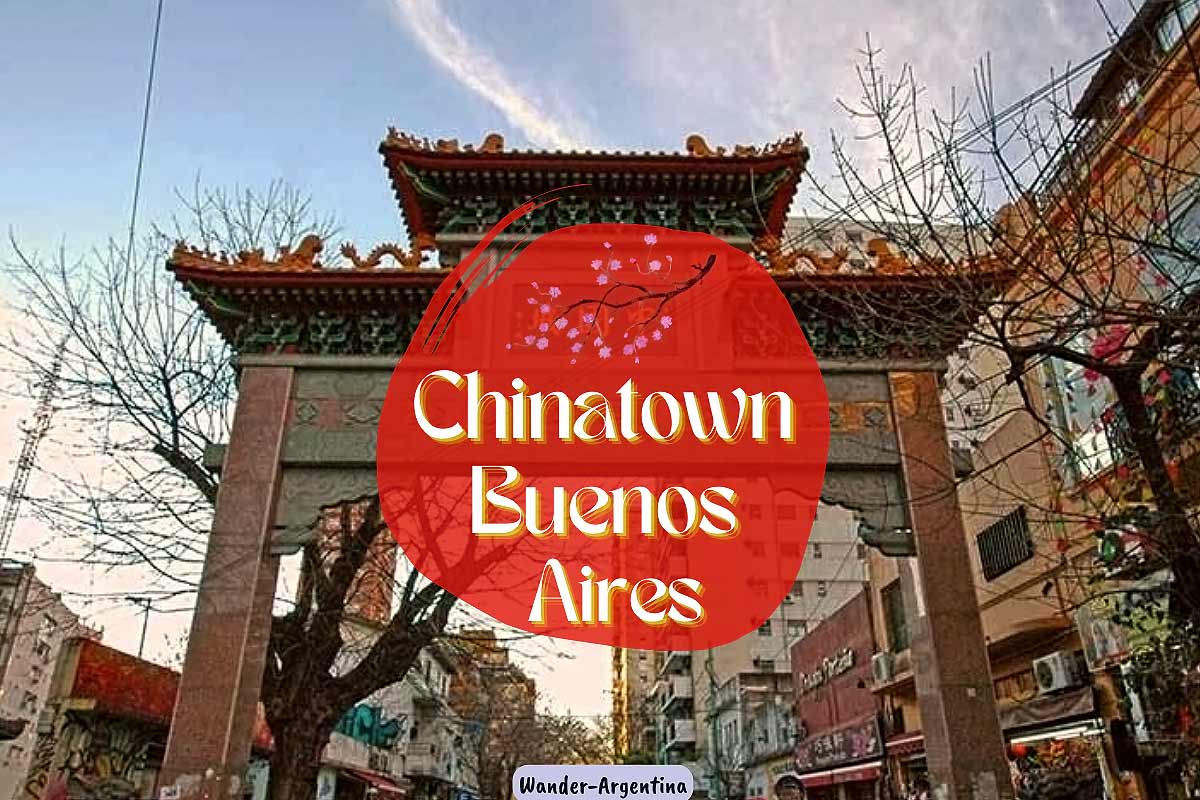
While Argentina’s only Chinatown is minuscule compared to those of London, Sydney, or San Francisco, its cultural impact on Buenos Aires is growing.
The neighborhood has over 100 Asian-owned businesses and receives 15,000 visitors every weekend.
Buenos Aires’ Little Tiger Economy
‘Barrio Chino’ is a bit of a misnomer as the neighborhood is the home to a cross-section of Asian-owned businesses.
Barrio Chino
Beginning in the 1980’s Taiwanese began to arrive in this area, followed in the 90s by those from Mainland China.
Preexisting Korean, Japanese and Laotian immigrants began to congregate around the area as well.
At first, there was just a smattering of supermarkets with hard-to-find items for cooking Asian food.
As the Asian immigrant population grew along came restaurants, schools, oriental variety shops, Buddhist temples, Chinese video clubs and beauty salons.
Neighborhood Buddhist Temples
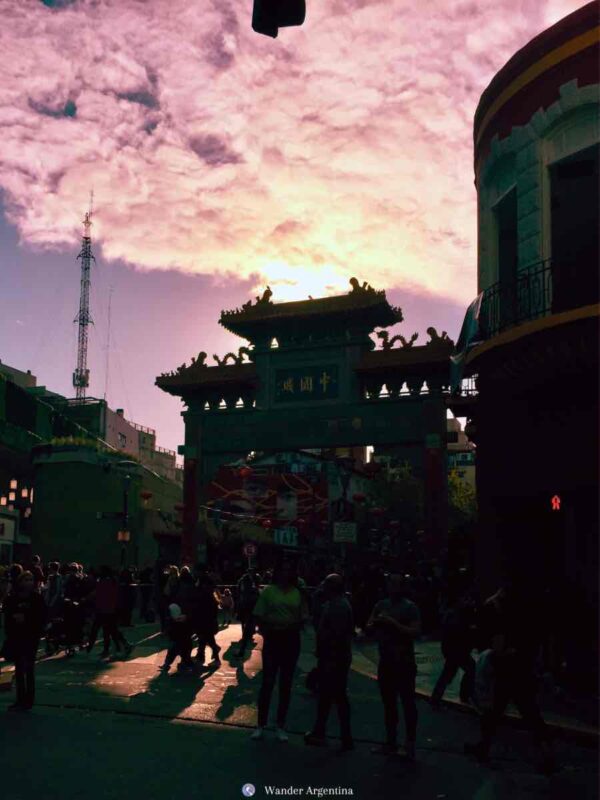
At the Tzong Kuan temple, one of the first Buddhist temples in the city, one can pay homage to a big shiny Buddha and attend classes in meditation, Chinese calligraphy, Mandarin, Kung Fu and Tai Chi Chuan.
Since the neighborhood’s founding, Templo Budista Tzong Kuan and Fo Guang Shan Buddhist Temples were established as well as the Buddhist Meditation Center Diamond Way.
The Buddhist Association of China in Argentina has a peaceful temple that served as a vaccination location during the pandemic.
The SingHeng Cultural Institute and Presbyterian church offers children’s and adult education courses in Chinese and Spanish.
Those looking for alternative medical treatments come here to find acupuncturists and Chinese remedies at the neighborhood herbalists.
In 2006 a group of area businessmen tried to get Chinatown officially recognized as a distinct neighborhood in addition to the 48 other ‘barrios’ of Buenos Aires.
Buenos Aires Department of Urban Planning rejected the idea, noting that the denomination does not reflect the neighborhood’s true demographics.
While this area is the commercial focal point for the Asian community in Buenos Aires, Chinese residents make up less than 1% of the residential population of Belgrano.
Most of the city’s 120,000 Chinese residents live in lower-rent neighborhoods such as Once, Flores, Barracas and the city suburbs.
Some say, ‘Feng Shui? — No Way!’
Officially Barrio Chino is limited by Juramento, Arribeños, Montañeses and Monroe Avenue, but as the neighborhood booms, its boundaries are creeping outward each year.
Chinatown has become a fashionable place for ever-trendy Porteños and spice-craving foreigners.
A small but vocal group of area residents feel threatened by the bustling energy brought by the neighborhood’s commercial expansion.
The Neighborhood Archway 牌坊
The controversy came to a head in 2009 when the $500,000 archway, or Paifang, was shipped in five containers from China, and was placed at the entranceway of the neighborhood.
The installation of the traditional friendship archway was delayed because of complaints that it didn’t conform with zoning laws, but the city stepped in to rezone the area shortly before the coronation, causing accusations of corruption.
In an unusual move, then-Mayor Mauricio Macri received the gift from Zhou Tienong of the Assembly of the People’s Republic of China in a ceremony at the Capitol building.
The ribbon cutting took place in front of a drawing of the arch instead of holding the inauguration on site.
The same day the civil association, ‘Neighbors of Belgrano’ held a rally in front of the Chinese Embassy to denounce what they refer to as the ‘Archway of Lies.’
Among the group’s legal grievances are the felling of neighborhood trees, zoning infractions, the sale of expired food and garbage in the street.
Considering that property values have risen in the area, the grumpy neighbors have widely been painted as xenophobes — or at least resistant to change.
For 27-year-old Vanessa Liao, coordinator at the Chinese-Argentine Cultural Association, the archway validates the growing Asian community in Buenos Aires.
“The archway shows that we are really accepted here,” she says. “In recent years the Argentines are more accepting of us, they come here for the shopping and the festivals and even to study the language.
There is more interest in Chinese culture now than when I was growing up. That’s good because people feel more at home here.”
Chinatown is celebrated for its great food shopping. Asian restaurants abound, ranging from hole-in-the-wall to high-end.
The growing number of non-food stores in the area sell everything from inexpensive oriental merchandise to decorate your place and J-Pop (Japanese pop music), to Anime and manga (adult comics).
Street Food & Asian Restaurants
A range of Asian restaurants in Buenos Aires Chinatown offer hard-to-find dishes for those craving congee, pad thai, a bento box or dumplings.
Street food offerings include shui jian bao (dumplings), Run Bing (Taiwanese burrito), Ba Wan (meatballs), Zongzi (rice dumplings) and authentic Chinese and Taiwanese food.
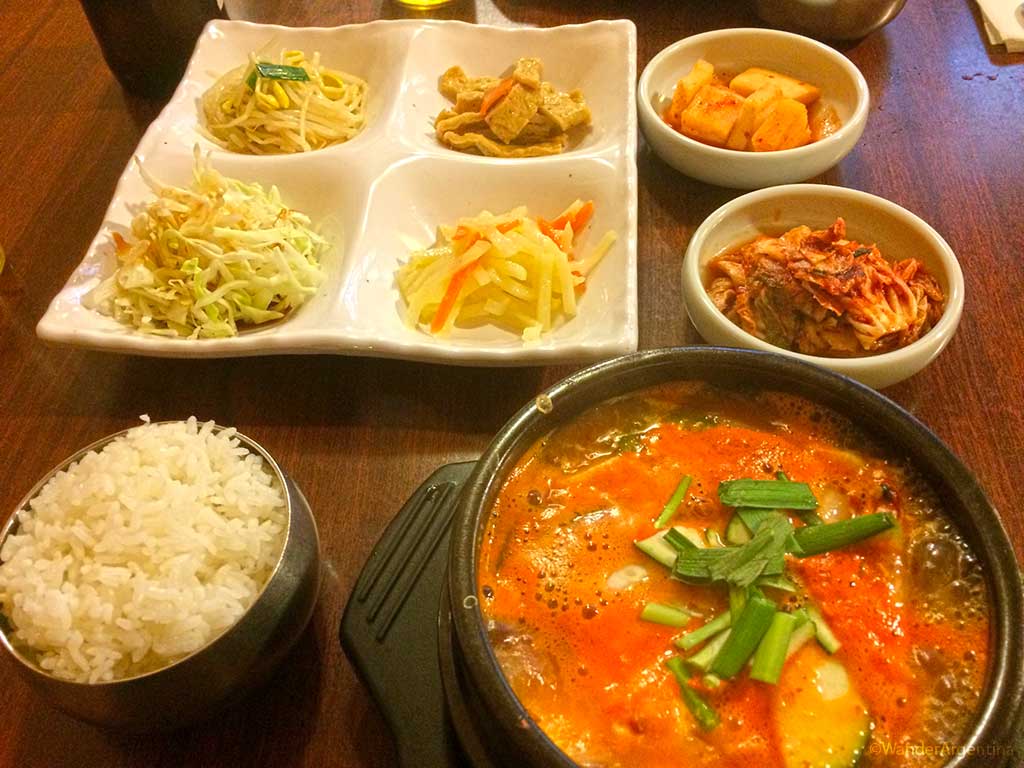
Dim Sum is hard to come by in Argentina but you can get your dumpling fix at Royal Mansion or Hong Kong Style.
For fresh Japanese food, head to Mendoza Street where some options are Fujisan and Nobiru.
Right around the surrounding neighborhood of Belgrano you can find Thai food at Casa Lotus Thai or more varied Southeast Asian food at El Quinto Cocina Asiática.
There aren’t many options for Korean food around here, but nearby BBQ Town is a buffet-style Korean restaurant with Korean barbecue.
(For a wide variety of Korean restaurants, head to the Flores neighborhood where there is a larger residential Korean community.)
Notable Chinese Restaurants in Chinatown
Most Chinese restaurants across the country serve American-style Chinese cuisine adapted to a Western palate with salty chow mein and chop suey being the primary dishes.
Keeping in mind that the normal Argentine diet mostly consists of pasta, pizza and meat dishes, even American Chinese food is exotic for them.
In most of the country, every Chinese restaurant menu is the same adjusted for sweet and salty-loving Argentine tastebuds.
If you are craving real Chinese food in Buenos Aires, Barrio Chino is a much better bet than elsewhere in the city.
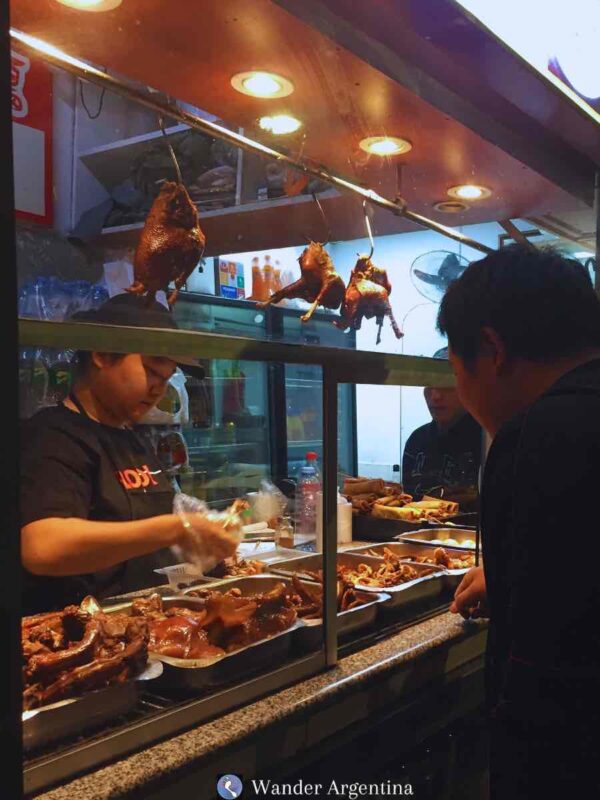
Even then, remember that most Argentines are not known to be ‘adventurous eaters.’
It’s easy to be misled by reading Google restaurant reviews because Argentines may rate a place with traditional food poorly.
Montañeses 2574, Barrio Chino
One of the original Cantonese-style restaurants to open in Barrio Chino. It reopened in 2022 and is now run by the family’s second generation. Not the most authentic here, but it has a nice setting and an excellent wine selection compared to other options.
📍Ma La Tang – 火锅 🍲 -$$
Mendoza 1583, Barrio Chino
A traditional-style no-frills hot pot restaurant, with food measured by weight. This restaurant has been able to remain authentic with a nifty trick to not put off sensitive local palates. They offer the broth in three ways: non-spicy, spicy, and very spicy. -Cash only
Mendoza 1598, Barrio Chino
Royal Mansion was the first Cantonese dim sum restaurant to open in Buenos Aires. A large restaurant with a lovely atmosphere, decent food, and mediocre service. Prices are high relative to other restaurants in Buenos Aires, but a lot of the ingredients expensive to import are, so it’s understandable. -Cash or debit card only.
Mendoza 1689, Barrio Chino, Belgrano
Chinese Rose has a bit more mass appeal and is more touristy with a menu in three languages. Food is unfortunately adapted to the Argentine palate but it’s worth a mention because it has a lovely outdoor area and accepts credit cards.
Chinese New Year in Buenos Aires’ Barrio Chino
Barrio Chino’s biggest yearly celebration is Chinese New Year.
The fun event with a dragon dance, lion dance and other performances takes place every February on the closest Sunday to the date of the Chinese New Year.
How to Get to Buenos Aires’ Chinatown
Buenos Aires small Chinatown is in the Belgrano neighborhood, next to Palermo.
Buses: 15, 29, 42, 44, 60, 63, 64, 65, 80, 107, 113, 114, 118, 130.
Train: Belgrano C Station, Bartolome Mitre line
Subway: Juramento Station, Line D (Chinatown is six blocks from here. Walk to Juramento and Arribeños.
Templo Tzong Kuan/ Chinese-Argentine Cultural Association
Montañeses 2175
Tel: 4786-9499
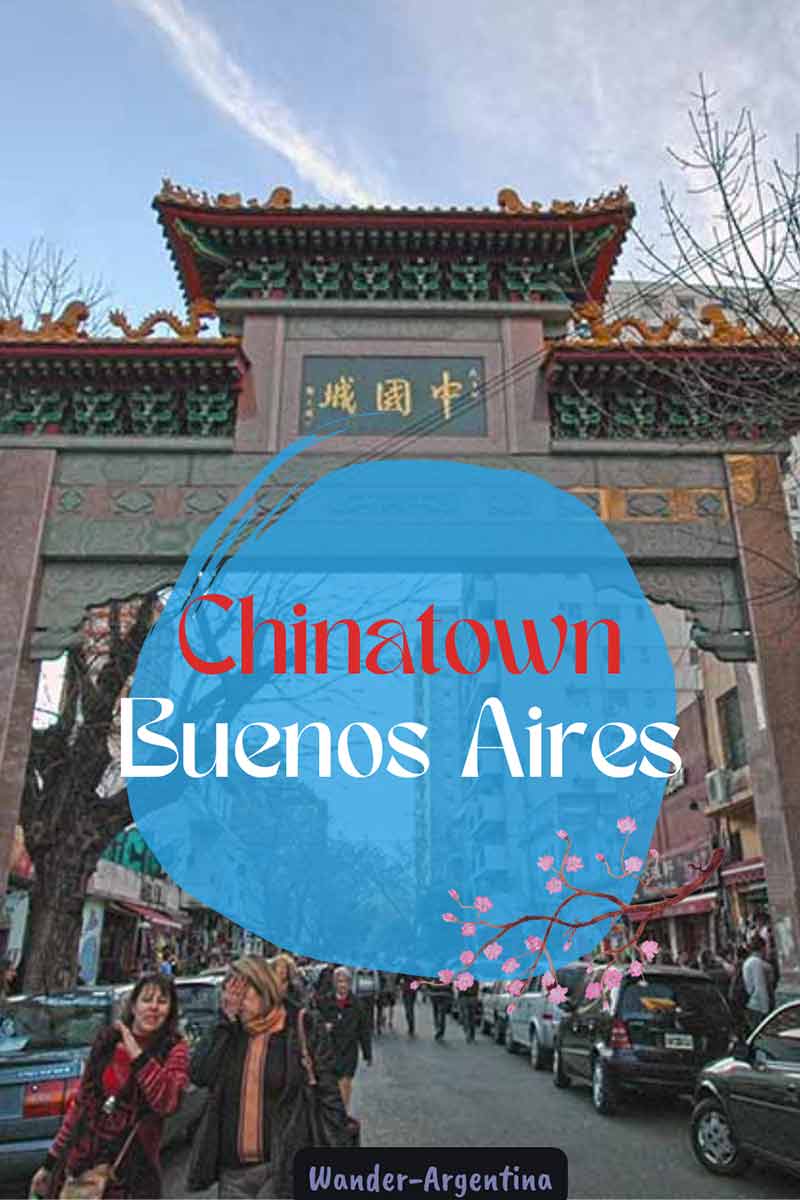


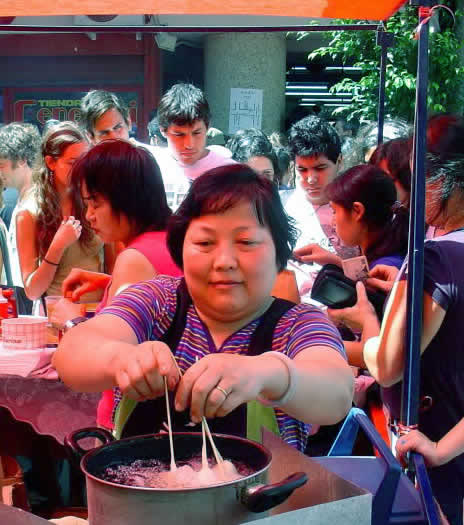
1 thought on “Chinatown Buenos Aires: Discover Barrio Chino”
Comments are closed.